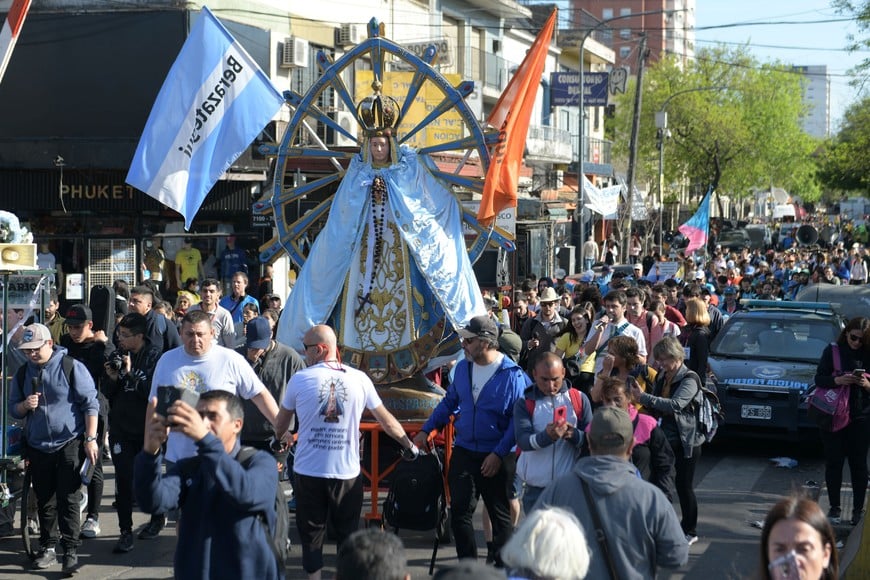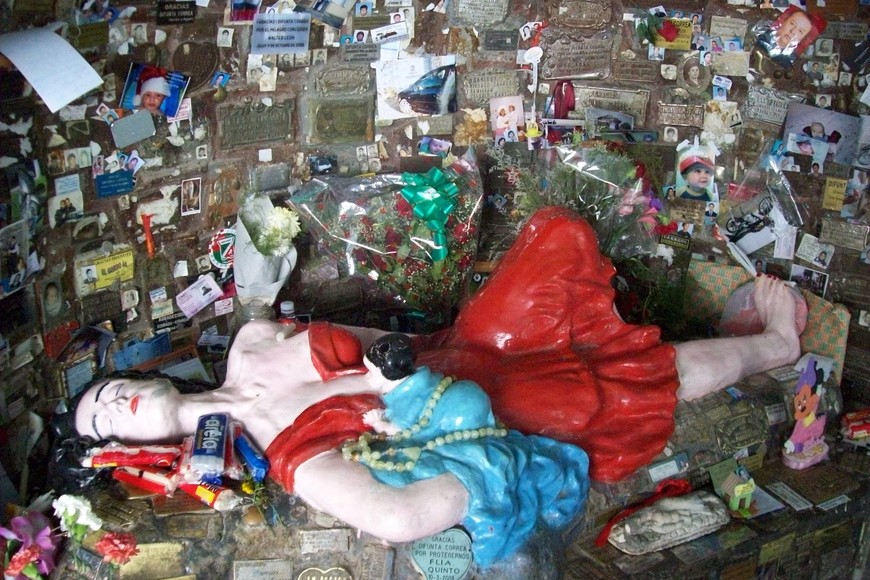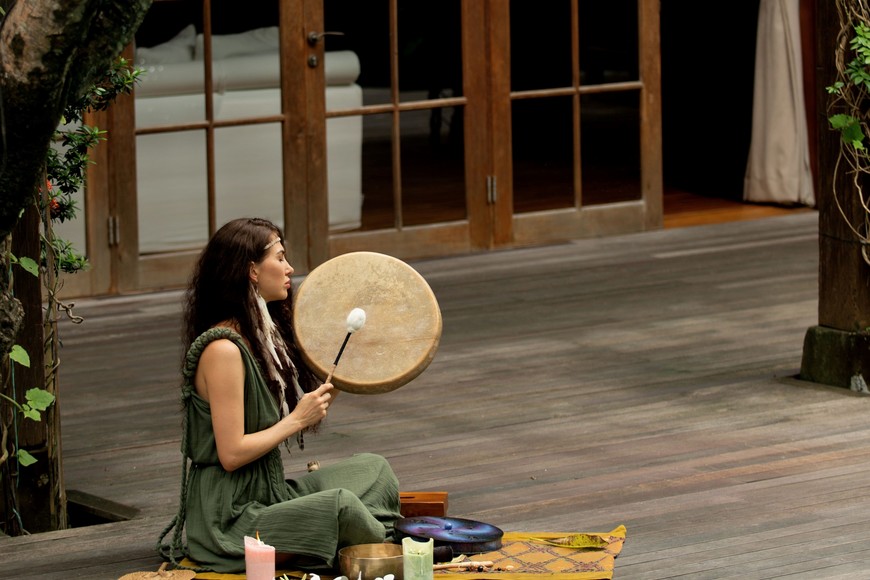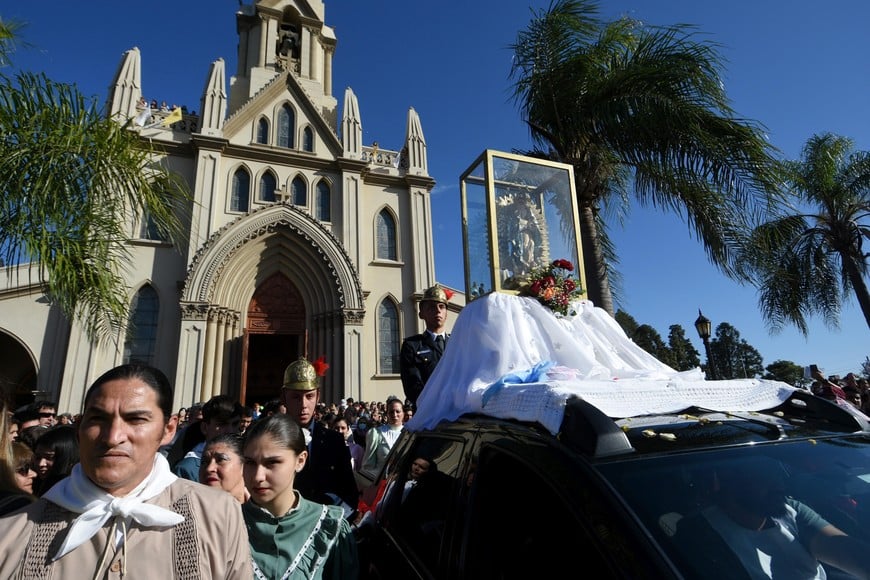Monday 1.5.2023
–
Last update – 9:20
In the city of Santa Fe, the Catholic parishioners made a pilgrimage to the Basilica a few days ago and expressed their devotion to the Virgin of Guadalupe. Just here, in the town of Felicia, the devotees approach the Virgin of Miracles. In Rosario there are the massive pilgrimage to San Nicolás and the processions to visit Father Ignacio. And in Mercedes, Corrientes, a more than emblematic case is the crowd summoned by Gauchito Gil.
But the concept of “religiosity” occupies a much more comprehensive and heterogeneous range. Today we talk about travel and ritual tourism; then, perhaps religion should coexist with a much more multifaceted concept: that of “spirituality”. Well, here different popular agglutinations converge around the “faith in something”. Thus, the Afro aspects can be included, the trips to Capilla del Monte Córdoba, to experience contacts with “intra or extraterrestrial beings”; the processions to the Buddhist stupas in the south of the country, and a large number of examples.
So, between the first and the second, is there something in common? Yes, as long as each phenomenon is studied from the concept of “sacred mobilities”. This is what a group of 25 researchers from all over the country who belong to CONICET and public universities managed to do, and who dedicated themselves to studying and compiling in a book -without falling into the canonical guidelines of monotheistic religious institutions- how This idea of popular mobility around spirituality is reconfiguring the traditional concept of religion.
It should be made clear that nothing further is the intention of this note to affect the sensibilities or fervent beliefs of people who profess a religion, whether they belong to Christianity, Judaism, Islam or other religious affiliations. The central idea is, collecting the contribution of specialists, to show how the idea of spirituality is reconfigured and how people “mobilise” around what they feel fond of faith or belief.
A long pilgrimage…
“For more than 15 years we have been working on the subject of pilgrimages. We began to get in touch with other researchers from all over the country who were in the same investigations. And we set out to elaborate a work that tracked and ‘mapped’ the great diversity of the sacred mobilities of the country. The approach is very federal, because it touches all the Argentine regions”, says Dr. Fabián Flores, editor of the work together with his colleague Dr. Rodolfo Puglisi, in dialogue with El Litoral. (see Who they are).
From the beginning, the work begins as a redefinition of the conventional guidelines with which pilgrimages had been studied. “Here we are talking about sacred mobility -Flores makes it very clear-. A Catholic pilgrimage is a form of mobility, but there are many others, he adds. So, one of the premises of the book was to broaden the range with which these phenomena were usually studied .

However, on the one hand, an attempt was made to think of the work as a great variety of forms that it adopts (trips, processions, spiritual tourism); “and, on the other, to avoid that Catholic bias by which we almost always look at religious phenomena. And to think, precisely, that outside the Catholic Church there are other forms of sacred mobility, thought of in a much broader sense These mobilities are very important in the regions of our country”, underlines the researcher.
In this mapping of sacred and popular mobilities, the researchers found a wide range of practices that distance themselves from conventions, that is, new aspects of religiosity and new actors: “It was interesting to see how some phenomena survive and resist the passage of time time; some continue to be conventional and others, reinventing themselves. Thus, new religious modalities are emerging,” he explains.
popular religiosity
The book takes practices linked to the Catholic Church -pilgrimages, for example- that have a strong presence in the institution. They are the events institutionally ordered and organized by the Church, where it is the main actor, such as the Youth Pilgrimage to Luján or, without going any further, the Pilgrimage to the Basilica of Guadalupe, in this capital city.
But the study also deals with other manifestations where the Church feels more “overwhelmed” and in which more tangential phenomena appear: it is what is called “popular religiosity”. Regarding these cases that go by the side, the devotion to San Baltasar (in Corrientes) appears; the massive pilgrimage to the sanctuary of Gauchito Gil in the town of Mercedes, in the same province, and of the Difunta Correa, whose main sanctuary is in the town of Vallecito, province of San Juan, also massive.

“It is not that the Church is not present in these cases, but it does not have a complete ‘management’ of the sacred mobilities. It is generally the actors themselves who operate by their own faith, by popular religiosity and they do so in an organized manner by others criteria, forms, parameters”, expands Dr. Flores.
Mobilities “outside”
And in the mapping of the work, the sacred or spiritual mobilities that function outside the hegemonic religious canon appear. At this point, novel issues were detected, since experiences of the “religious trips” type were collected. A researcher of the book, for example, tells about the case of urban middle-class people from the City of Buenos Aires who get together to make weekend trips to neoshamanic ceremonies, with the intention of connecting with that “universe of the sacred “.
There is another case that goes in the same direction. It is that of the people who travel to a point in the Cordoba mountains (Capilla del Monte), to try to come into contact with extraterrestrial beings and to meditate. “These morphologies are very new and interesting, because they help to rethink many questions, such as: ‘What do we understand by religion?’ That is why in our work we do not address religious mobilities, but rather sacred mobilities, that is, forms with those that we associate with that world, and that are very diverse”, points out the researcher.
The Iemanyá Ceremony also appears in the list, in Mar del Plata, and another on the banks of the city of Quilmes. In the latter case, a spiritual practice closely linked to the sea is carried out. A whole series of movements of people is carried out towards the beach or water areas, and where the practitioners throw flowers, they do ritual dances: this also falls within the universe of sacred mobility.
the afro matrix
With respect to Afro-based religions, neoshamanic practices appear, even with aspects of umbandismo, which are also experiences of sacred mobility. “In our religious system, these types of spiritual tendencies are highly discriminated against, which makes it difficult for them to develop their practices in an ideal of religious freedom or worship: this is conditioned by all these processes of social regulation,” warns Flores.

Regarding this last case, there is an experience in the city of Buenos Aires itself. It is a parade with dance in their traditionally white clothes in the public space. “The practitioners go with drums and break into everyday life to show themselves, to gain visibility as a legitimization strategy and as resistance to the ‘criminalization’ bias. These people even pose this practice as a form of political mobility. Visibilization in space urbanization is a political act”, concludes Dr. Flores.
“Sacred mobility: pilgrimages, processions, tourism and religious trips in Argentina” (Prohistoria Ediciones, 2023), is the title of the book. Its editors were Fabián Flores, geographer, PhD in Social and Human Sciences, independent researcher at Conicet and the University of Luján and director of the Interdisciplinary Group for Landscape, Space and Culture Studies (GIEPEC). Likewise, he is co-director of the Interdisciplinary Group of Studies on Religious Pluralism in Argentina (GIEPRA).
The other editor is his colleague Rodolfo Puglisi, Doctor of Anthropology (professor of social anthropology at the National University of La Plata, UNLP); Conicet researcher at the Humanities and Social Sciences Research Institute (IdIHCS, Conicet-UNLP). More than 25 researchers and researchers participated in the book.
Sacred mobility, or what is similar to a mass, Gauchito Gil and aliens

